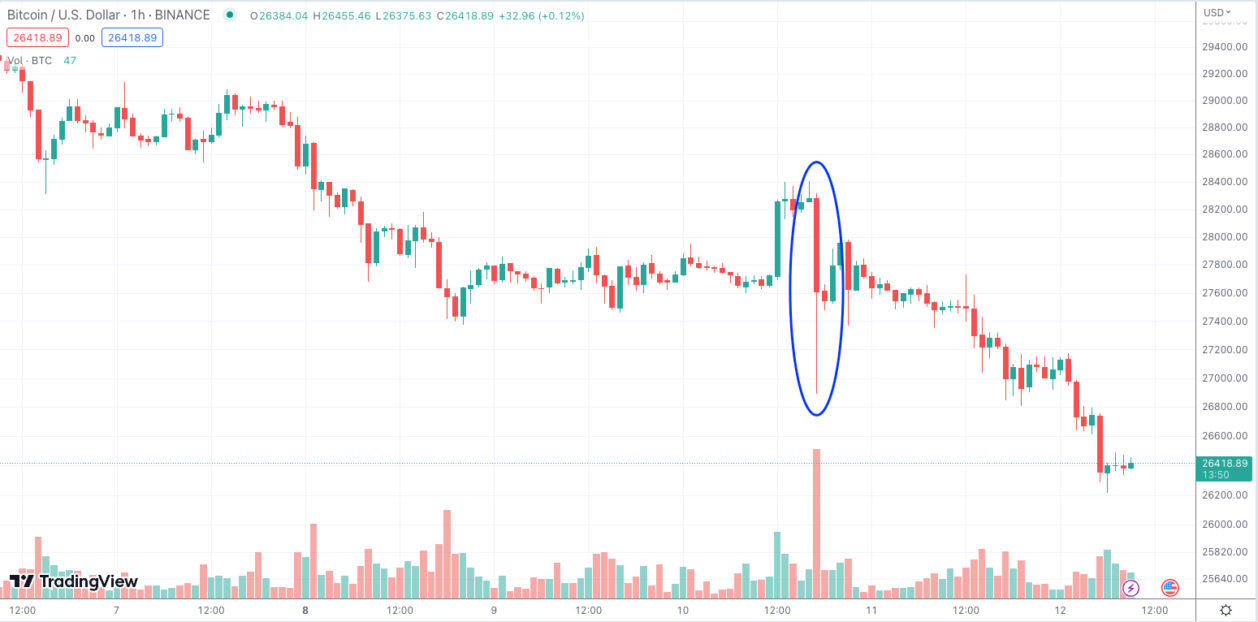According to reports, the Bitcoin price drop has caused 57,000 leveraged liquidations in the blockchain industry. This is arising as a result of the persistent downward fluctuation of the cryptocurrency king.
Leveraging in cryptocurrency trading refers to taking out additional loans from an exchange platform to fund trading positions that are outside the scope of your present capital.
The exchange platform will require collateral before loaning you more money, so you will have to surrender some of your cash. This security is referred to as the “initial margin.” When you are unable to meet the margin requirements for your position(s), liquidation takes place. Leverage allows for even faster liquidation.
Bitcoin suffered a drop of roughly 2% in a week after reaching its eleven-month peak last month at $30,000 and now trading at $27,000 levels. Following the demise of FTX and a global financial crisis, Bitcoin has managed to survive in the face of intense market pressure and general unpredictability.
After the fatal November fall of the previous year, when Bitcoin was trading between $16,000 and $18,000, it has since risen by almost 80% but is still in negative territory. Since BTC’s all-time high of $69,000 in November 2021, its value has decreased by roughly 50%.
Also read: Binance’s Nadeem Anjarwalla Shares Views on Nigeria National Blockchain Adoption Policy
Anton Palovaara, founder and lead researcher at Leverage.Trading noted that the majority of traders that have faced liquidations over the past 24 hours had opened positions on derivatives swap contracts, also known as perpetual contracts. According to him, a total of $143.28 million worth of trades were liquidated, liquidating over 57,000 traders, with a BTC-USDT-SWAP contract on OKX at 1 pm worth $2.61 million is the largest single liquidation order.

These contracts lack expiration dates and traders can hold open positions for as long as they want. However, this lack of a physical delivery date can lure traders into holding their short-term positions overnight, which can quickly turn into high-risk swing trade positions that are vulnerable to sudden price movements.
Cryptocurrency Leveraged Liquidations
Leveraging in cryptocurrency trading refers to taking out additional loans from an exchange platform to fund trading positions that are outside the scope of your present capital.
The exchange platform will require collateral before loaning you more money, so you will have to surrender some of your cash. This security is referred to as the “initial margin.” When you are unable to meet the margin requirements for your position(s), liquidation takes place. Leverage allows for even faster liquidation.
According to Palovaara, the biggest factor of risk comes for those traders that don’t apply proper risk management techniques such as stop losses or isolated margin accounts.
Isolated margin accounts limit the use of margin capital to a single position, which can prevent a sudden price movement from wiping out the entire account.
In contrast, crossed-margin accounts give one single position access to all the account’s margins, putting the entire account at risk of liquidation in the event of a sudden price move.
Palovaara adviced that traders must utilize a liquidation price calculator to assess the risk level of their positions in order to further reduce the danger of liquidation.
Traders who determine their liquidation price in advance can decide how hazardous their position is and adjust their leverage ratio accordingly.
In order to ensure that the liquidation price is beyond the grasp of the market noise, it is critical to assess how volatile the market is and select a leverage ratio.












